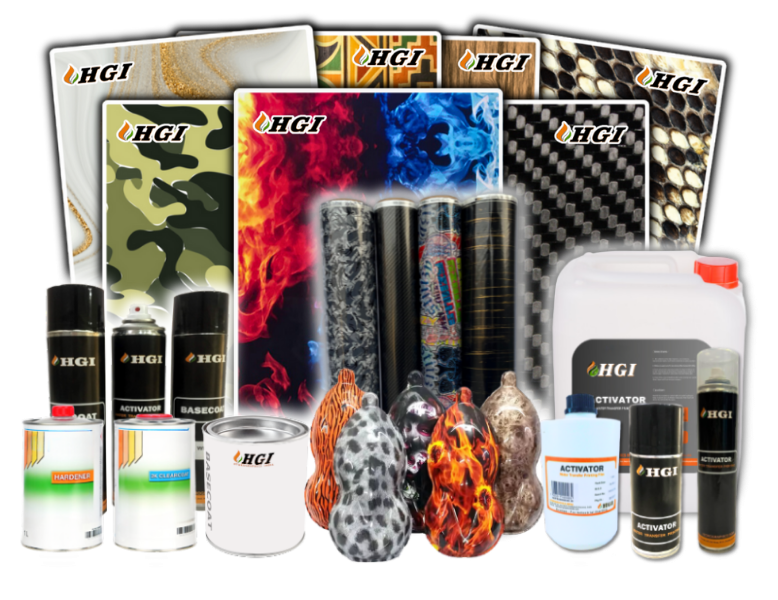KNOWLEDGE BASE
What is water transfer printing?
Water transfer printing, also known as hydrographic printing or hydro dipping, is a method used to apply intricate and customized patterns to the surface of three-dimensional objects. It works on almost any material including plastic, metal, wood, and glass.
How does hydro dipping work?
The process involves these main steps:
1. A design is printed on a water-soluble film.
2. The film is placed on the water's surface, where it floats.
3. An activator solution is applied to dissolve the film and create a bonding agent.
4. The object is carefully dipped through the ink layer.
5. The object is rinsed and coated with a protective clear finish.
1. A design is printed on a water-soluble film.
2. The film is placed on the water's surface, where it floats.
3. An activator solution is applied to dissolve the film and create a bonding agent.
4. The object is carefully dipped through the ink layer.
5. The object is rinsed and coated with a protective clear finish.
What designs can I use?
We stock over 2500+ patterns including Carbon Fiber, Wood Grain, Camouflage, Skulls, and Designer Arts. We also offer Custom Printing services where you can use your own digital files.
What objects can be dipped?
Any rigid object that can be submerged in water without damage can be dipped. Common items include Automotive Rims, Dashboards, Helmets, Gun Stocks, Phone Cases, Gaming Controllers, and Home Decor items.
What is Activator and why do I need it?
Activator is a chemical solution sprayed onto the film after it hydrates on the water. It dissolves the PVA backing and liquifies the ink, turning it into a floating layer of oil that bonds to the object. Without activator, the film remains a solid sheet and will not transfer.
Is the finish permanent?
Yes. Once the design is transferred and sealed with a high-quality automotive Clear Coat (Topcoat), it becomes as durable as car paint. It is resistant to UV rays, scratches, and weather.
Do you offer training?
Yes, we provide comprehensive training. For machine buyers, we offer in-person training at our Faridabad facility. For DIY kits, we provide detailed video tutorials and technical phone support.
Can I do this at home?
Absolutely. Our DIY Combo Kits are designed specifically for home use. You will need a container for water (a bathtub or large plastic bin works), the kit materials, and a well-ventilated area.



